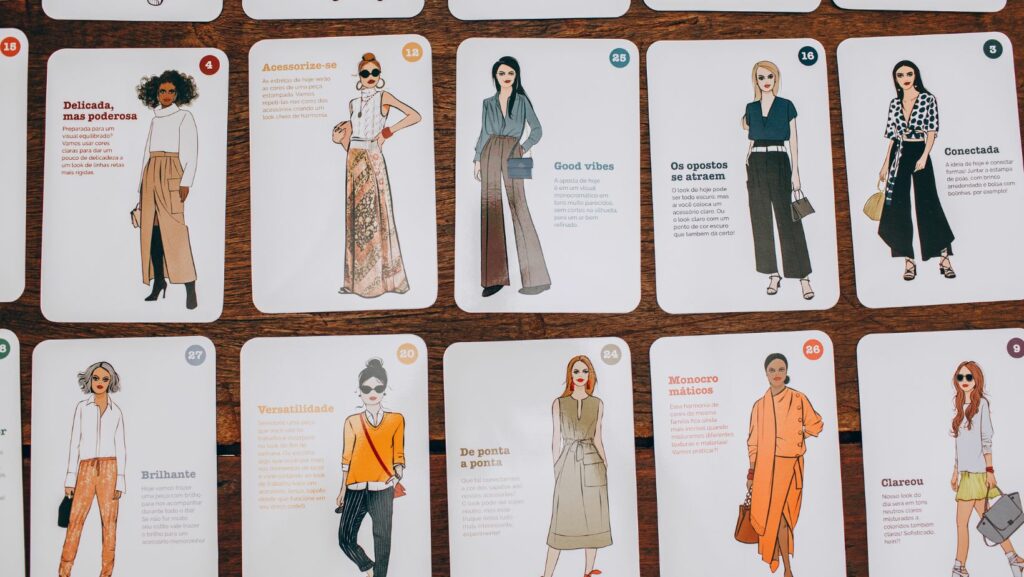 Fashion is dynamic, ever-changing, and influenced by designers, celebrities, and cultural shifts. On the other hand, style is timeless, personal, and a reflection of one’s personality and preferences. Differentiating between the two can empower individuals to embrace trends that resonate with their personal style, rather than blindly following fleeting fashion fads. By delving into the nuances of fashion and style, one can cultivate a wardrobe that not only looks good but also feels authentic and true to oneself.The concept of fashion and style continues to evolve, reflecting the diversity and individuality of people’s preferences and identities.
Fashion is dynamic, ever-changing, and influenced by designers, celebrities, and cultural shifts. On the other hand, style is timeless, personal, and a reflection of one’s personality and preferences. Differentiating between the two can empower individuals to embrace trends that resonate with their personal style, rather than blindly following fleeting fashion fads. By delving into the nuances of fashion and style, one can cultivate a wardrobe that not only looks good but also feels authentic and true to oneself.The concept of fashion and style continues to evolve, reflecting the diversity and individuality of people’s preferences and identities.
Difference Between Fashion And Style
What Is Fashion?
Fashion is the prevailing trend in clothing, accessories, and footwear that is popular at a specific time. It encompasses a wide range of styles and designs that are showcased on runways, in magazines, and across various social media platforms. Fashion is constantly evolving and influenced by cultural, social, economic, and political factors. It represents the current aesthetic preferences of the masses and embodies the spirit of the times.
What Is Style?
Style, on the other hand, is a personal expression of one’s individuality through clothing and accessories. It goes beyond following trends and involves how individuals creatively put together pieces to reflect their personality. Style is timeless and unique to each person, serving as a visual representation of their tastes, preferences, and attitudes towards fashion. Unlike fashion, style is not bound by trends but rather by personal identity and taste.
Historical Evolution of Fashion and Style
Moments in Fashion History
 Fashion history is marked by significant milestones that have shaped the way people dress and express themselves over the years. In the 1920s, the iconic flapper style emerged, characterized by its rebellious spirit and shorter hemlines, reflecting the changing social norms of the time. Moving into the 1960s, the mod fashion trend revolutionized the industry with its bold patterns, mini skirts, and shift dresses, epitomized by cultural icons like Twiggy. The 1980s witnessed the rise of power dressing, where sharp shoulders, bold colors, and oversized silhouettes became synonymous with success and empowerment. This era also saw the emergence of streetwear, blending haute couture with casual elements to create a new wave of fashion that resonated with urban youth culture. In the 21st century, sustainability and ethical fashion have taken center stage, challenging traditional practices and promoting eco-friendly approaches to clothing production. With the rise of social media influencers and online platforms, fashion has become more democratic and inclusive, allowing individuals to showcase their unique styles and challenge conventional beauty standards.
Fashion history is marked by significant milestones that have shaped the way people dress and express themselves over the years. In the 1920s, the iconic flapper style emerged, characterized by its rebellious spirit and shorter hemlines, reflecting the changing social norms of the time. Moving into the 1960s, the mod fashion trend revolutionized the industry with its bold patterns, mini skirts, and shift dresses, epitomized by cultural icons like Twiggy. The 1980s witnessed the rise of power dressing, where sharp shoulders, bold colors, and oversized silhouettes became synonymous with success and empowerment. This era also saw the emergence of streetwear, blending haute couture with casual elements to create a new wave of fashion that resonated with urban youth culture. In the 21st century, sustainability and ethical fashion have taken center stage, challenging traditional practices and promoting eco-friendly approaches to clothing production. With the rise of social media influencers and online platforms, fashion has become more democratic and inclusive, allowing individuals to showcase their unique styles and challenge conventional beauty standards.
Evolution of Personal Style Through Decades
 Personal style has evolved significantly over the decades, influenced by societal changes, cultural movements, and individual expression. In the 1950s, the elegant and feminine silhouette of Dior’s “New Look” represented a return to glamor and sophistication after the austerity of World War II. This era celebrated hourglass figures and tailored ensembles, embodying a sense of luxury and refinement. The 1970s embraced bohemian chic, characterized by flowing fabrics, earthy tones, and eclectic patterns inspired by global cultures. People sought self-expression through fashion, embracing natural textures and embracing a carefree, unconventional approach to style. Fast-forward to the 1990s, grunge fashion emerged as a rebellious response to mainstream trends, featuring oversized flannels, combat boots, and distressed denim. This anti-fashion movement represented a shift towards authenticity and individuality, rejecting the polished aesthetics of previous decades.
Personal style has evolved significantly over the decades, influenced by societal changes, cultural movements, and individual expression. In the 1950s, the elegant and feminine silhouette of Dior’s “New Look” represented a return to glamor and sophistication after the austerity of World War II. This era celebrated hourglass figures and tailored ensembles, embodying a sense of luxury and refinement. The 1970s embraced bohemian chic, characterized by flowing fabrics, earthy tones, and eclectic patterns inspired by global cultures. People sought self-expression through fashion, embracing natural textures and embracing a carefree, unconventional approach to style. Fast-forward to the 1990s, grunge fashion emerged as a rebellious response to mainstream trends, featuring oversized flannels, combat boots, and distressed denim. This anti-fashion movement represented a shift towards authenticity and individuality, rejecting the polished aesthetics of previous decades.
In the present day, personal style has become more eclectic and fluid, with individuals blending vintage pieces, contemporary trends, and cultural influences to create unique sartorial expressions. The concept of fashion and style continues to evolve, reflecting the diversity and individuality of people’s preferences and identities. When it comes to style, individuals draw inspiration from various cultural sources to create their unique aesthetic. This can involve blending traditional elements with modern trends, resulting in a fusion of cultural influences that define one’s personal style. For example, someone might incorporate vibrant patterns or textures from their cultural background into contemporary outfits, thus infusing their wardrobe with a sense of cultural identity.

